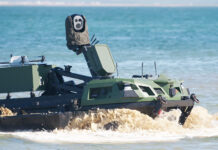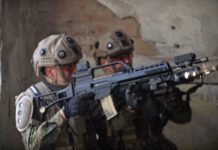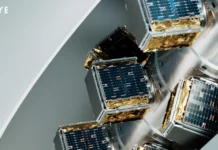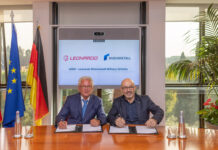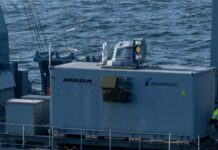Rheinmetall used the opportunity of Eurosatory 2024, held in Paris from 17 to 21 June, to unveil its Concept Unmanned Turret (CUT), presented at the show on the KF51 modification of the Leopard 2 main battle tank (MBT) platform.
The concept features a 130 mm/L51 main gun with automatic loader, with an ammunition supply of 25 rounds stored in two magazines at the rear of the turret, as well as a coaxial 0.50 cal heavy machine gun, while the commander also has a remote weapon station (RWS) that tracks the main optics (Main Sensor Slaved Armament, MSSA) equipped with a Rheinmetall RMG762 7.62 mm machine gun. The latter has three barrels, allowing a hot-fired barrel to be remotely exchanged. In this configuration, the RWS can also be used against hostile unmanned aerial vehicles (UAVs). A smoke grenade launcher is also integrated into the weapon station.
The CUT’s electrically directed turret houses the fire control system, parts of the networking and telecommunications equipment and other parts of the sensor system, ensuring superior situational awareness, which is also enhanced by integrated reconnaissance UAVs.
A key feature of the CUT is that, along with the MBT’s driver, the commander and gunner are protected in the hull. The commander and gunner would use their own day and night vision optics with laser rangefinders to conduct a firefight, with the gunner using modern SEOSS 400 optics. This is also installed in the commander’s MSSA weapon station. This enables both hunter-killer and killer-killer capabilities to be realised.
Rheinmetall has supplemented the MBT’s familiar passive protection with active hard- and soft-kill protection systems, with Israel Military Industries’ Iron Fist used as the hard-kill system and the Multifunctional Self-Protection System (MUSS) from Hensoldt and the ROSY rapid fog system installed as the soft-kill systems.
Interoperability has been a guiding principle in the CUT development, which has resulted in the turret being able to be seamlessly integrated with various existing MBTs. This offers an improvement to the overall capabilities of armed forces without the need for extensive updates to existing fleets or maintenance, repair and overhaul infrastructure, explained Björn Bernhard, CEO of Rheinmetall Landsysteme.
The Panther KF 51 was presented by Rheinmetall at Eurosatory two years ago, albeit with a manned turret. The idea behind the Panther KF 51 was to have a tank that could bridge the looming capability gap caused by delays to the Franco-German Main Ground Combat System (MGCS) programme. The Panther KF 51 is now being developed to series maturity – albeit with a 120 mm cannon – for potential launch customer Hungary.
With the Panther KF 51 CUT, the competition between the two German tank manufacturers – KNDS Deutschland and Rheinmetall – continues. At Eurosatory 2024 KNDS presented the Leopard 2 A-RC 3.0 MBT with an unmanned turret and a 120 mm calibre gun, with the option for a 140 mm weapon. Rheinmetall has thus countered this with the Panther sporting an unmanned turret and 130 mm cannon.
The aim of both companies is to bridge the MGCS capability gap on the one hand but to also offer technology for the MGCS programme, for which the contract for the construction of partial demonstrators will be awarded once the technologies have been selected.






